10/09/2018 Our article on the gravitational field of a laser beam has appeared in "Classical and quantum gravity". It caught the attention of the "New Scientist" that ran a story on it.
05/09/2018 Our review article on quantum-enhanced measurements without entanglement is finally officially published in Reviews of Modern Physics! There you can find inspiration and known facts about enhancing the precision of measurements using quantum effects without having to produce highly entangled states.
09/08/2018 Our paper on causal inference on two qubit-structures is finally published in NJP! Yes, under certain conditions there is a quantum advantage for infering the causal structure, and reading the paper you will understand why and how it comes about!
18/05/2018 Our article on the frequency spectrum of an optical resonator in a curved space-time has now appeared online, together with a cool video abstract!
23/04/2018 The gravitational interaction of light with light is quite different from the one of matter, and in some respects counter-intuitive. E.g. it has been known for a long time that two parallel beams of light do not attract each other - at least when they are modelled as plane waves, or infinitely thin pencils of light. The reason for this different behavior can be found in general relativity: the energy-momentum tensor has different structure compared to matter, and in addition, both gravity and light in vacuum propagate at the same speed.
A laser beam is neither a plane wave, nor an infinitely thin pencil, however. Rather, a laser beam is diffraction-limited, leading to a small but finite divergence angle that makes the beam look like a very long hyperboloid. In a preprint that just appeared on arXiv, we investigate the influence of this opening angle on the gravitational effect of the beam by systematically expanding the solution of the weak-field Einstein equations in powers of the opening angle. Do two parallel laser beams attract each other, after all? And what other interesting general relativistic effects might we expect? Find out here!
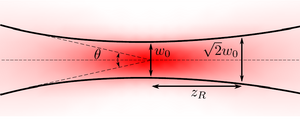
10/04/2018 Our article on quantum chaotic sensors has finally appeared in Nature Communications! Here's a press release from University Tübingen, and some more news coverage in Focus and Nanoweek.
02/03/2018 We have a new preprint on quantum metrology with a quantum-chaotic sensor! Quantum metrology has so far focused (exclusively?) on quantum sensors with integrable dynamics, such as harmonic oscillators or spins precessing in a magnetic field. The latter enable in fact one of the world's most sensitive magnetometers. Now we show that in relevant situations the sensitivity of quantum sensors might be enhanced even further by rendering their dynamics chaotic, e.g. through "kicking" them regularly with strong laser pulses that lead to non-linear precession. In the case of spin-exchange relaxation free ("SERF") magnetometers, we show through very detailed numerical simulations that it should be possible to increase their best sensivity by 68%, reaching an astonishing sensitivity of several atto Tesla/root Hertz with 1ccm of caesium vapor gas. We filed a patent for this technolgoy. Contact us if you are interested! We will be happy to provide you with more information.
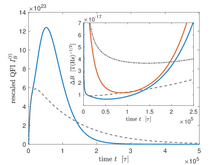
02/03/2018 Quantum mechanics can help one to infere causal structures underlying observed correlations! This was shown previously here. Now we examined this in more detail and found a nice geometrical picture that allows us to determine when exactly such a quantum advantage exists and how large the advantage is, in the sense of providing bounds on a mixing parameter that interpolates between a common-cause scenario and a cause effect scenario when given the correlations. As often, quantum entanglement helps, but now we find that entanglement is not always necessary for a quantum advantage to exist! On the technical side, we prove a new theorem on bounds for signed singular values of a sum of two matrices that might find independent application in other fields. Read more here.
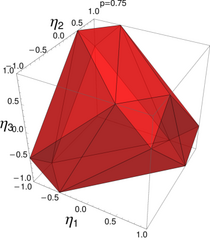
22/02/2018 Our article "Fourier-correlation imaging" just appeared online.
21/02/2018 Our article "Non-classical states of light with a smooth P-function" is now published online.
04/12/2017 Coherent states of light are the pure states of light with as little quantum noise as possible, and are in this sense the most classical states possible. They are produced for example by lasers far above the lasing threshhold and represent in that case a monochromatic wave. Randomly mixing such states leads to general classical states. They can be characterized by a positive definite so-called P-function, invented by Glauber and Sudarshan, which then can be interpreted as a probability distribution over coherent states. But even more fascinating than laser light are non-classical states, where the P-function can take on negative values! They are useful for all kinds of magic, such as enhanced precision in quantum metrology. Sadly, however, essentially only one kind of non-classical states with non-singular but not positive-definite P-function was known so far. In a new collaboration with researchers from Liège and Glasgow we have now introduced and explored theoretically entire new classes of non-classical states. The recipe for creating those is suprisingly simple and some of them should be straight forward to realize with current quantum optics technology.
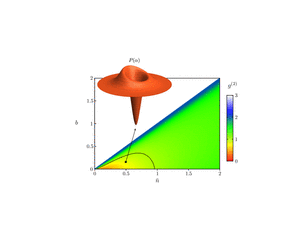
30/11/2017 Gravity influences the propagation of light, as the wave equation gets modified in curved space time. How does this affect the resonances of an optical resonator? Measuring frequencies has been developed to one of the most sensitive experimental techniques in physics. Can we use this to measure gravitational fields or accelerations from the shift of the resonance frequencies of a cavity? Find out more in this new preprint with colleagues from Vienna!
01/10/2017 Nadia Milazzo from the University of Palermo joined the team as new PhD student. Welcome, Nadia!!
03/08/2017 Our article "Intrinsic measurement errors for the speed of light in vacuum" has finally appeared in CQG - after an unprecedented odyssee through numerous journals that lasted for more than 2 years!! The positive side of this is that the article certainly improved on the way...
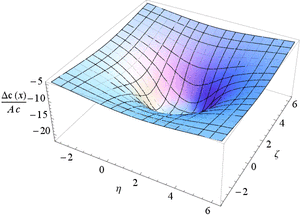
20/07/2017 Both Julien and Fabian succesfully defended their PhD thesis on the same day and with top grades! Congratulations!
10/05/2017 Satellite-based passive microwave imaging of Earth plays an important role in measuring soil moisture and ocean salinity, and hence investigating Earth's water cycle. Current instruments such as SMOS allow a spatial resolution of the order 40-50km. It is desirable to increase the resolution to about 1km, but this would make antennas forbiddingly large for a satellite, even with the spatial aperture synthesis already used in SMOS. In a new preprint we investigate in detail whether the motion of the satellite can be used for synthesising a large virtual two-dimensional antenna array from only a 1D array of physical antennas. We show that by correlating Fourier-components in extremely narrow frequency bands, it should indeed be possible to achieve the desired spatial resolution. However, the corresponding radiometric resolution is rather poor. Possible ways out of this are discussed.
Just in time for our preprint, our French patent for this "Fourier-Correlation Imaging" appeared!
10/04/2017 Deciding whether a quantum state is entangled or not is in general a difficult problem when the number of subsystems or the dimensions of the envolved Hilbert spaces become large. In a new preprint we map the problem on the problem of "truncated moment sequences" which is well studied in the mathematical literature. This leads to a powerful algorithm that returns a certificate of entanglement in a finite number of steps if the state is entangled, and a certificate of separability as well as an explicit convex decomposition of the state if the state is separable - typically reached in a small number of iterations as well. Compared to previous semi-definite algorithms, our algorithm is based on moment matrices and localizing matrices rather than the density matrix itself, and makes crucial use of the concept of flat extensions. Missing experimental data and subsystems of different dimensions or symmetries are naturally dealt with.
22/03/2017 A new preprint on improving the sensitivity in quantum metrology by "Hamiltonian engineering". This works when the Hamiltonian coding the parameter in the quantum system is not of the form of a phase-shift Hamiltonian (where the parameter just multiplies a hermitian generator). In such a situation, adding a fixed Hamiltonian obtained from the derivative of the original Hamiltonian, can dramatically increase the sensitivity - a technique we call "signal flooding". Another trick is to subtract a disturbing part of the Hamiltonian. We illustrate the technique at the example of NV center magnetrometry, where "signal flooding" can be achieved by adding a large magnetic field in the direction of the small magnetic field to be measured.
19/01/2017 Our paper on "Absolutely classical spin states" is out in Physical Review A.
18/01/2017 Entanglement is overrated! Many wonderful things in the "quantum-enhanced" world can be done without it. Have a look at our new preprint of a review article on "Quantum enhanced measurements without entanglement", where we discuss on 44 pages, including 7 pages of references, possibilities of improved sensitivity of measurements due to quantum effects but not primarily based on entanglement.
08/11/2016 Our paper on the partial transpose criterion has appeared in Physical Review A.
20/10/2016 Measuring phase shifts is one of the most important and most studied primers of quantum metrology that enables a plethora of applications, ranging from magnetometers to gravitational wave detectors. Can one make such a measurement more precise by coupling the system to additional degrees of freedom? In a new preprint we prove a powerful result that sets stricts limitations to what can be achieved. Read more here.
23/08/2016 With the rise of quantum information procressing, characterizing quantum devices has become an important problem. Here we investigate how well one can estimate the parameters of the so called depolarizing channel and the phase flip channel, both in ideal situations and when qubits can be lost.
16/08/2016 Remember that tensor representation of spin states that we introduced here? It still keeps leading to new and intersting insights! Just about a decade ago, new mathematics saw the light of day in the form of a spectral theory of tensors, a non-linear generalization of the familiar concept of eigenvalues and eigenstates of linear operators. The question what one can learn from the spectrum of a density operator about its entanglement is an old one, but here we give it a new twist by considering eigenvalues of the tensor that represents a spin-j state, and in particular its smallest eigenvalue. If j is integer and the state separable, one easily shows that the smallest tensor eigenvalue must be positive. But what if it is not? Find out here!
26/06/2016 The positive partial transpose criterion is one of the most important checks for the separability (i.e. lack of entanglement) of a quantum state. Now we found that for symmetric states of mult-qubit systems it can be formulated very simply and elegantly in terms of the positivity of a matrix generated from our new tensor representation of spin states. In addition, this leads to a physical interpretation of the criterion in terms of experimentally accessible correlation functions of single spin-observables.
17/06/2016 Superradiance in the emission of light from a number of atoms typically arises when the atoms get closer to each other than the wavelength of the light emitted. Traditionally, one has considered the atoms as distinguishable and sitting at fixed classical positions. Now we have a description of the emission processes from indistinguishable atoms that is relevant for example for Bose-Einstein condensates. We find that by letting the atoms quantum mechanically delocalize (e.g. by opening the trap potential in which the atoms are caught), one should be able to observe a full transition from superradiance to individual spontaneous emission. See here.
21/12/2015 Two effects have been known so far to influence spontaneous emission: the Purcell effect (i.e. through the density of states of the electromagnetic modes to which atoms are exposed), and the Dicke effect (i.e. collective emission, leading to superradiance or subradiance). Here we show that there is a third effect: the collective quantum state of motion of the atoms can have an effect very similar to the Purcell effect, and in particular drastically modify collective emission! Read more here.
13/11/2015 The phase in quantum mechanics marks arguably the most profound deviation from classical mechanics, leading to quantum interference, entanglement, and many other goodies. The most spectacular quantum effects come about when the quantum phases of many sub-systems synchronize, as e.g in super-conductivity. What are the general mechanisms that allow such quantum-phase synchronization? We start to lift the veil in this preprint!
27/10/2015 We have a new preprint on the quantumness of arbitrary spin-1 states, including an exact analytical formula for pure states, pretty tight upper and lower bounds for mixed states, and new insight into the geometry of symmetric entangled states of two spins-1/2!
06/07/2015 Our paper on "Coherent averaging" has finally appeared in Annalen der Physik.
15/06/2015 A new preprint with colleagues from Toulouse. For once with hbar=0, but on the other hand with finite c (i.e. non-negligible relativistic corrections). A nice exercise of applying the Lorentz transformation to real world systems - here a satellite monitoring Earth by passive microwave radiometry, like in the SMOS mission that my colleagues pioneered. We generalize the venerated Van Cittert - Zernike theorem that is used for interferometric aperture synthesis to observers moving with respect to the sources, here a satellite flying with about 7km/s.
20/04/2015 New preprint with colleagues from Oxford, Caltech, Korea University and Singapur in quantum non-equilibrium thermodynamics: what is the worst case work that you can extract from a heat-bath with a quantum thermal machine?
13/04/2015 New preprint on quantum enhanced measurements: a comprehensive examination of the performance of the "coherent averaging" scheme in terms of the ultimate achievable sensitivity of the measurement apparatus.
19/03/2015 Our patent application from a year ago for a new method of satellite remote passive microwave sensing with colleagues from the CESBIO in Toulouse has finally appeared. Or how to create high-resolution 2D images from a moving 1D antenna array. Contact me if you want to license the method!
25/02/2015 Know the Bloch vector? Meet the Bloch tensor! Our article with colleagues in Paris and Liège for a general and very elegant description of arbitrary spin states via a newly introduced Bloch-tensor has appeared in Physical Review Letters.
17/02/2015 New preprint on the question of how precisely the speed of light and the metric of space-time can be determined in principle. Here we combine the modern theory of quantum parameter estimation theory with a general relativistic calculation of the back action of the quantum probes on the metric of space time
